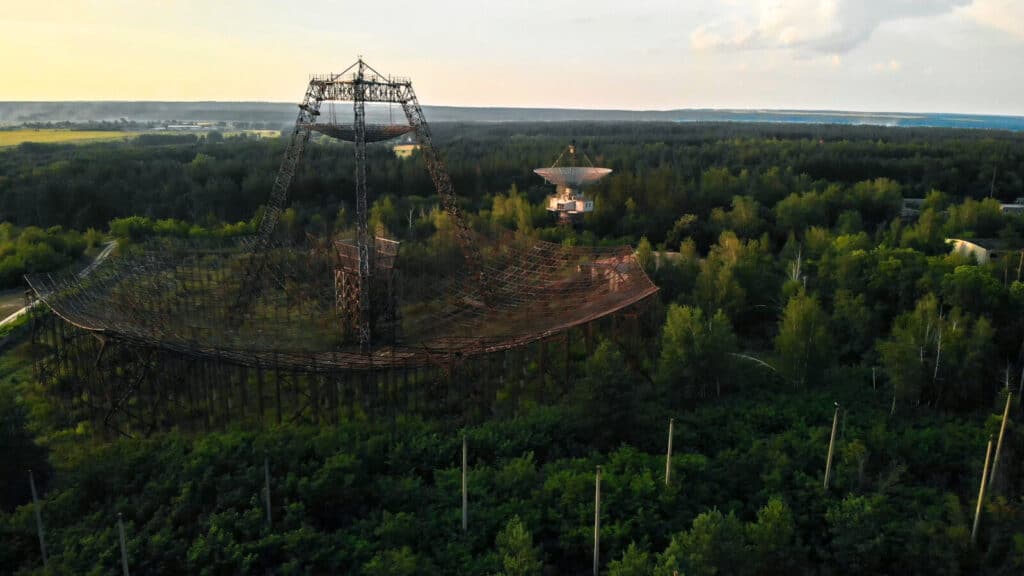Vandaag opent Het DocLab van IDFA, misschien wel mijn favoriete deel van het festival. Met een eigen competitie, opdrachten en expositie, is dit het domein van het digitale experiment. Voor deze editie bezocht ik de VR werken in de Tolhuistuin en wat ik zag was van een enorme verscheidenheid. Van trage essayistische documentaires (maar dan in 360 graden) tot een spel dat heel geschikt is voor kinderen: de selectie laat zien wat er mogelijk is aan nieuwe vertelvormen voor documentaires.
Bij toeval bevatte mijn eerste selectie uitsluitend werk van vrouwelijke makers. Ik had het daar niet op uitgekozen en het viel me pas achteraf op. Ik zocht 4 werken uit die de grootste verscheidenheid in vorm en inhoud beloofden. Daarin werd ik niet teleurgesteld. Neem bijvoorbeeld Cabinets of Wonder van Susanne Kim. Op het eerste gezicht is het een avonturenspel waarin je schatkisten mag openen en raadsels mag oplossen. De entree, een wonderkamer vol kinderspulletjes, lijkt op een traditioneel spel maar het geeft toegang tot mentale wereld van kinderen die buiten de maatschappij vallen. De animaties en spelletjes geven een lichte toon aan zware verhalen over autisme of racisme. Die speelsheid maakt het heel geschikt om met kinderen zware onderwerpen aan te kunnen snijden. En voor volwassenen is het een mooi gemaakt spel voor mensen die graag overal op willen kunnen klikken in een VR werk.
Zuurstokesthetiek
Ook geanimeerd, maar dan met een heel ander onderwerp is Corpus Misty van Aubrey Heichemer. In een zachte en spekjesroze wereld vertellen vrouwen over hun lichaam, seksualiteit en genderidentiteit. Is het nog baanbrekend om te melden dat je schrok toen je voor het eerst je vulva zag, voorgeprogrammeerd door porno-idealen? Of dat je graag je eigen genderidentiteit vormgeeft? Misschien niet, maar zo lang nog niet iedereen dat laatste zonder repercussies kan doen, moeten we maar blijven hameren.
De zachte wereld representeert de veilige binnenwereld waarin je openheid over jezelf kunt spreken. Het gebrek aan tactiele ervaring zit mij hier in de weg. Ik wil al die zachte roze en gele vormen ook echt aan kunnen raken en niet alleen vervormen met mijn controllers. Ik wil schuimrubber en plastic aanraken, zoetigheid ruiken. Voor mij gaat Corpus Misty net niet ver genoeg. Ik begrijp en onderschrijf wat Heichemer wil zeggen en waarom ze voor een zuurstofesthetiek gaat. Voor mij mag het allemaal net iets extremer, iets meer schuren.
De politiek van de desoriëntatie
Ik was onder de indruk van het prachtige Ferenj: a Graphic memoire in VR van Ainslee Robson. We vliegen rond in de herinneringen van Robson, een pointillistische wereld, gemaakt van gecrowdsourcede beelden die met technologie uit de game-wereld een 3-D wereld vormen. De bolletjes vormen en vervormen zich, naarmate we dichterbij komen tot de schoolbus; het restaurant van haar ouders in Cleveland; en Addis Abeba waar ze gewoond heeft. En overal is ze een vreemde, een ferenj. Robson gebruikt daar zelf het concept liminaliteit voor: ambiguïteit of desoriëntatie, overgang van een toestand in een volgende. Het zit in haar identiteit en in het beeld: het beweegt constant, er is geen vaste grond, geen eenduidig idee van thuis.
Door de opbouw van de beelden kom je steeds net niet aan in een volgende toestand, dan vertroebelt het beeld al weer en verandert het in een nieuwe. Het weerspiegelt de impressionistische herinneringen in al hun vluchtigheid en veranderlijkheid. Het appelleert ook aan Robson biculturele achtergrond (Ethiopisch-Amerikaans) waarmee ze nergens even vanzelfsprekend thuis is als haar omgeving. De nostalgische Ethiopische muziek refereer aan de gouden periode van die muziek, maar ook aan de periode voor de dictatuur van Mengistu. In beeld, verhaal, muziek en concept is die ongrijpbaarheid, het net niet ergens aankomen heel sterk neergezet. Ga dit werk zien!

Kuifje in de USSR
Van geheel andere orde is het kalm observerende 360 werk Bridge to Sovietopia van Marie Alice Wolfszahn. Het is een lineair werk, we gaan in een langzame rijder door de geschiedenis van de Soviet-architectuur. En dus van de dromen, de ambities en de ondergang van een rijk. We glijden over de grootste schotelantenne van de Sovjetunie van het Instituut voor Ionosfeer. Een naam die rechtstreeks uit Kuifje afkomstig lijkt, en waar ze elektriciteitsstoten konden opwekken die krachtiger waren dan bliksem. Ook zoeven we door een megalomaan grote staalfabriek. En we komen aan in de vergane glorie van een theaterzaal die betere tijden heeft gehad. In de arbeiderswijk kwamen maar mooi de grootste sterren. In de vorm is dit de meest traditionele documentaire, het is volstrekt lineair, niet interactief, maar gewoon: mooi gemaakte film waarin de schaal van de architectuur voelbaar wordt door de 360 graden-technologie.
Het is opmerkelijk dat in alle 9 werken die te zien zijn, vragen worden gesteld over identiteit en plaats. Hoe beïnvloedt de plaats waar je woont wie je bent? In hoeverre kun je afwijken van een norm, zonder dat het ongemakkelijk of ongelukkig wordt? Wat hebben plaats, identiteit, en politiek met elkaar te maken? Het ene werk prikkelt meer dan het andere, maar in zijn totaliteit is het een sterke editie van de IDFA VR.
